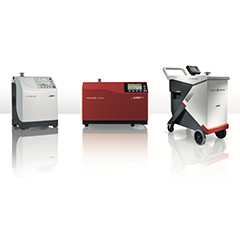After installing a new system, or maintaining an existing one, leaks occur frequently. This is often due to joining errors, or forgotten defective seals. Correct handling of helium leak detectors is crucial for finding these leaks and controlling equipment for tightness. The more is known about the physical phenomena underlying the leak test as well as the optimization possibilities during testing, the easier it is to use helium leak detectors in practice. This also leads to more reliable measurement results.
The following overview provides practical information on the correct handling of
helium leak detectors and the successful implementation of leak tests on
vacuum systems.
What needs be considered when connecting the leak detector to a coating system?
Leaks that occur after start-up or maintenance of vacuum systems are often very large. However, commercially available helium leak detectors can no longer be used from a certain leak size on. Their maximum working pressure is usually between about 6 and 25 mbar. If there are large leaks, this pressure may not be reached during evacuation. Figure 1 shows a Si3N4 (silicon nitride) coating system. After maintenance, only a pressure of 80 mbar is reached during evacuation. One way to reduce the inlet pressure of the leak detector used is to use a needle metering valve.
However, this is accompanied by an extension of the response time and inevitably requires the use of an auxiliary pump. Instead of throttling a vacuum leak detector, the Pfeiffer Vacuum ASM 340 leak detector can be used to create a qualitative massive leak detection mode, which helps to localize the present leak.



























